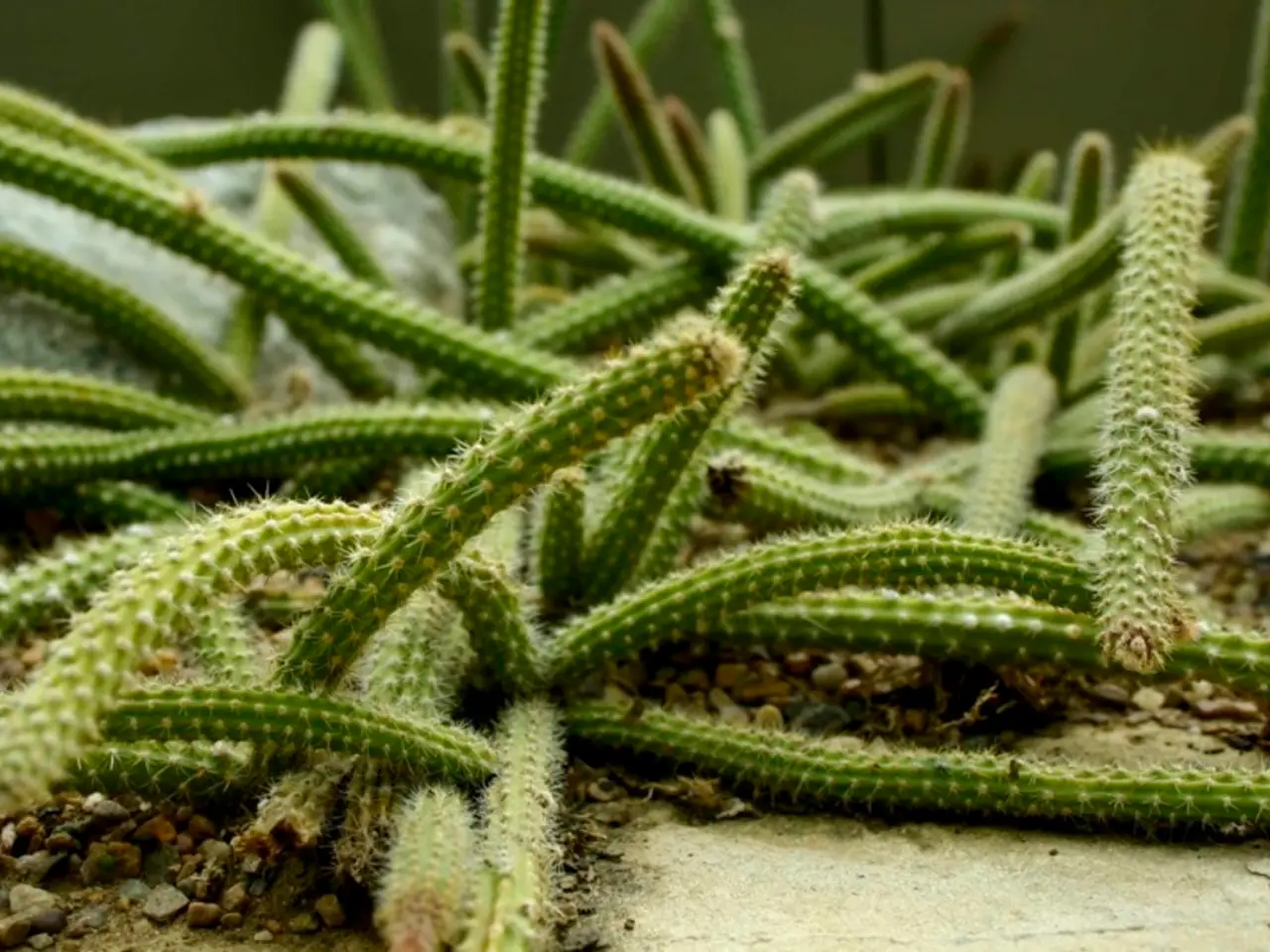Cultivating and Nurturing an Easter Lily Cactus: A Comprehensive Guide
The Easter Lily Cactus (Echinopsis oxygona) is a charming and fragrant addition to any home. Here's a guide to help you nurture this beautiful plant.
Light
Preferring bright, indirect sunlight, the Easter Lily Cactus thrives best in a spot with plenty of light but some protection from the harshest midday sun. A southern or western-facing window is ideal for indoor light exposure.
Water
Water the cactus sparingly, allowing the soil to dry completely between waterings. During the growing season (spring and summer), water moderately, but reduce watering significantly in the dormant season (autumn and winter) to avoid root rot.
Temperature
Maintain the temperature between about 60°F and 85°F (15°C to 29°C). The Easter Lily Cactus tolerates warmer temperatures typical of indoor conditions but should be protected from cold drafts and frost.
Humidity
This cactus thrives in low to moderate humidity, similar to typical indoor environments. High humidity can encourage fungal problems.
Soil
Use a well-draining, aerated cactus potting mix. A mix containing organic substrate and inorganic drainage materials like sand or grit is ideal to prevent moisture retention and root rot. Cactus or succulent soil is recommended.
Fertilizer
Fertilize sparingly, about once a year in spring during active growth, using a balanced fertilizer (such as 5-10-5 NPK) diluted to half or quarter strength applied to moist soil. Avoid fertilizing during winter dormancy.
Care
Repot only when the plant becomes rootbound. Ensure pots have drainage holes to prevent excess water. Avoid overwatering by checking soil dryness before watering. Staking is generally unnecessary unless the plant grows tall with heavy blooms.
Growth and Reproduction
The Easter Lily Cactus can produce offsets or pups as it matures. These can be divided from the parent plant and potted up separately as new plants. When increasing the size of the container, only do so when the body of the plant touches the sides of the pot.
Origin
Native to Bolivia, Uruguay, Argentina, Paraguay, and Southern Brazil, the Easter Lily Cactus is part of the Echinopsis genus, with over 100 varieties, but only one being the Easter lily cactus.
Flowers
This cactus produces funnel-shaped flowers that emit a sweet scent, adding a touch of fragrance to your home. Many Echinopsis species develop similar, tropical, scented, large flowers.
By following these guidelines, you'll be well on your way to growing a healthy and beautiful Easter Lily Cactus. Happy gardening!
[1] Source: University of Florida IFAS Extension - Caring for the Easter Lily Cactus: https://edis.ifas.ufl.edu/pdffiles/PP/PP02000.pdf [2] Source: University of Florida IFAS Extension - Caring for the Easter Lily Cactus: https://edis.ifas.ufl.edu/pdffiles/PP/PP02000.pdf [3] Source: University of Florida IFAS Extension - Caring for the Easter Lily Cactus: https://edis.ifas.ufl.edu/pdffiles/PP/PP02000.pdf [4] Source: University of Florida IFAS Extension - Caring for the Easter Lily Cactus: https://edis.ifas.ufl.edu/pdffiles/PP/PP02000.pdf [5] Source: University of Florida IFAS Extension - Caring for the Easter Lily Cactus: https://edis.ifas.ufl.edu/pdffiles/PP/PP02000.pdf
Nurturing a home-and-garden filled with diverse plants, the Easter Lily Cactus (Echinopsis oxygona) can be a delightful addition to your lifestyle, with its charming appearance and fragrant flowers emitting a sweet scent. When choosing a spot to place your Easter Lily Cactus, consider a location with abundant light, as it prefers bright, indirect sunlight, particularly in southern or western-facing windows.




